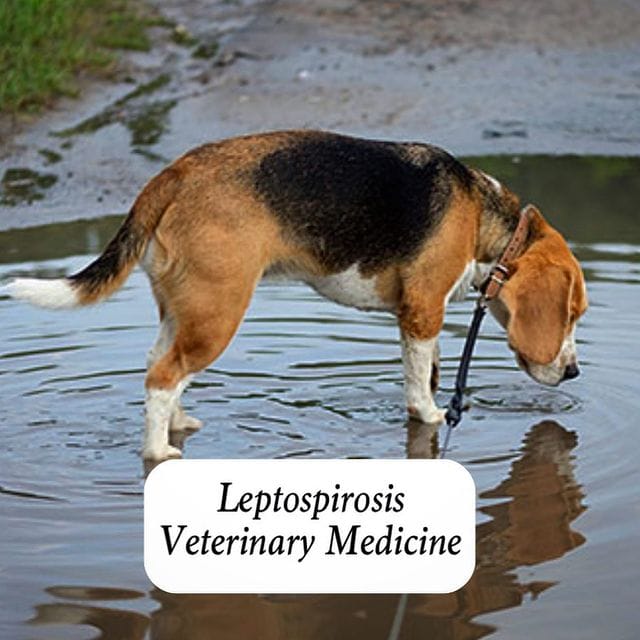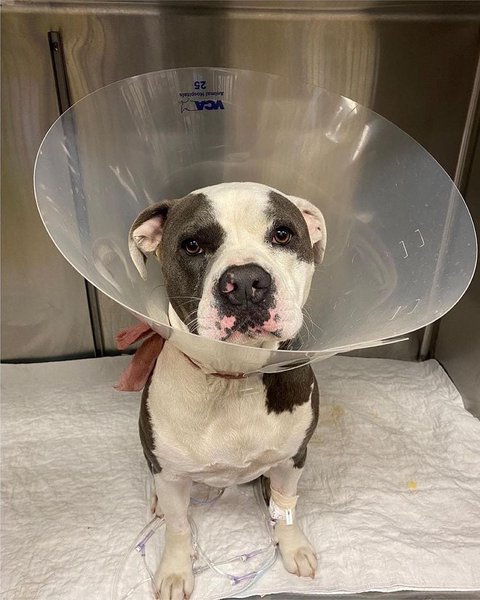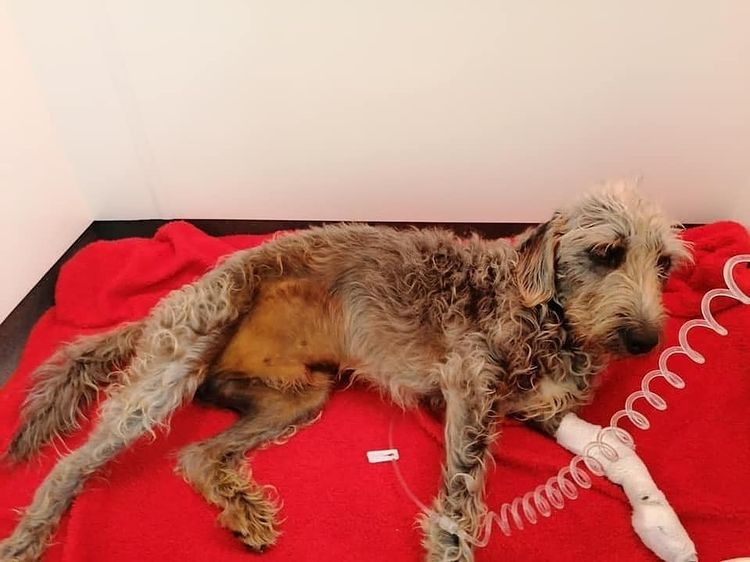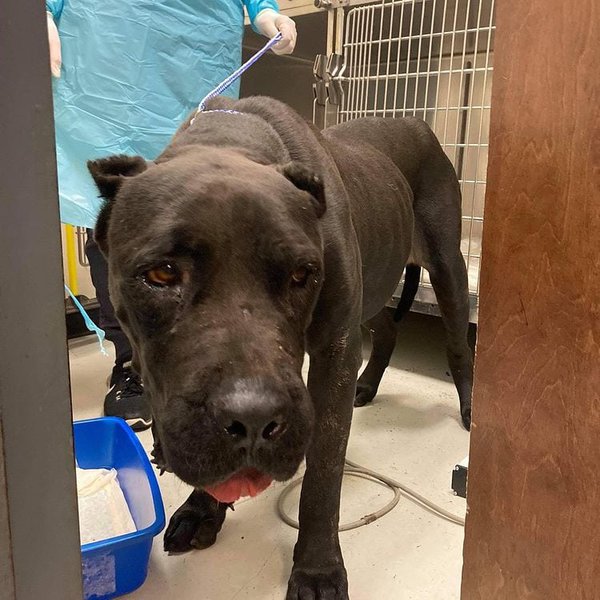Dogs with leptospirosis can develop severe lung or kidney diseases and sometimes difficulty breathing. If your puppy faces such disorders, you must seek emergency medical assistance from your vet.
Leptospirosis is a zoonotic disease caused by a bacteria called leptospira. This bacteria is found in worldwide soil and natural waters. However, it is more common in warm climates and high annual rainfall. Leptospira often spreads from dog to dog and sometimes from dogs to humans.
But, here is some good news for you that not all dogs fall ill after getting in contact with leptospira. In this article, we will tell you some causes of leptospirosis in dogs, its symptoms, and if your canine can survive it or not.
Moreover, we will also throw some light on how this infectious disease is diagnosed and treated. To collect all the valuable data to help your pup, keep reading till the end.
How Do Dogs Get Leptospirosis?

Dogs get leptospirosis due to a bacterium called Leptospira interrogans. This disease can also invade your pooch’s body through transmission, culture, and molecular biology.
Let’s dive deeper and check on some leading causes of leptospirosis in dogs.
Bacteria
Different bacterias, including genus leptospira and spirochaete that lie closer to the inner membrane of dogs rather than the outer membrane, can cause leptospirosis. These bacterias are formed in the fluid of the outer membrane that is loosely associated with the cell wall.
Moreover, they infect your pup’s body from inside and keep on infecting it. However, after a couple of weeks, it starts to show symptoms.
Transmission
Even though leptospira does not affect your pooch on its own, it can catch the disease from other animals. Many animals carry leptospira in their kidneys, and it can end up in soil and water through their urine.
If your pup goes outside often, then there is much possibility that your canine may come into contact with that infectious urine. Not only this, if your dog eats any chicken or beef containing leptospira, it can still affect your canine’s health.
Molecular Biology
Oleic acid albumin is generally found in dog food as a fatty acid. Moreover, liquid food with this molecule can be retained for up to 13 weeks and not more than that.
It is because the 14th-week leptospira will start to develop in it and can cause leptospirosis in your puppy. Afterward, leptospira moves through the micro-layers of cells and gets quicker access to the bloodstream of your pooch.
What Are Signs Of Leptospirosis In Dogs?

The signs of leptospirosis include fever, muscle pain, stomach ache, skin problems, refusal to eat, and diarrhea. These signs generally appear one or two weeks after developing this infection.
However, the incubation period of this disease can take as long as a month. Here are some signs of leptospirosis in dogs that you can detect.
Fever
The most common but challenging sign to detect leptospirosis in dogs is fever. It is because even if your pup gets excited or stressed over something, its body temperature also starts to increase. To know if leptospira has infected your dog, make sure to keep an eye on it and take note if your puppy is shivering or has red glassy eyes.
Refusal To Eat
If your pup is ignoring food even if it has not taken any diet, supplement, or even treats for so long, then it may be possible that your canine is affected by leptospira. Moreover, this condition is quite dangerous and life-threatening because refusing to eat can lead to dehydration and malnourishment in your dog.
Diarrhea
Diarrhea is another serious sign of leptospirosis in dogs. Moreover, diarrhea is quite a severe condition, and if it is due to leptospira, it would possibly be more harmful to your pup. Other than that, if your canine is constantly vomiting multiple times in 24 hours and has lost its appetite, then you must be concerned about his health and talk to a vet right away.
Abdominal Pain
If you notice your dog facing difficulty in lying down or breathing, there’s a possibility that leptospira has contacted your pooch. When this infection surrounds a canine, it suffers from a swollen and tense abdomen. Other than that, spirochaete in leptospirosis also causes stomach aches and some traumatic causes.
Skin Problems
If your dog is suffering from leptospirosis, you will notice red bumps, reddened skin, and itching all day long. Not only this, leptospira and spirochaete also bring bad odor, flakiness, and dryness to your canine’s skin. Moreover, wherever they lick their body, it would leave red and brown staining.
Muscle Pain
When your pup comes into contact with leptospirosis, it ultimately suffers from fever and traumatic conditions. With all this stress and weakness, your dog will face severe muscle pain in its body. Moreover, leptospirosis also causes stiffness in the muscles of your pup.
Can A Dog Survive Leptospirosis?
Yes, dogs can survive leptospirosis if appropriate and aggressive medical therapy is administered. The hospital discharge rate for dogs’ survival is 80% approximately. Leptospirosis in dogs can also be treated with antibiotics.
However, if treated early, your pup can survive leptospirosis without facing an organ issue or severe conditions. But, if it is left untreated, it can be fatal. Let’s dig deeper to know which dogs are at high risk for leptospirosis.
Which Dogs Are At High Risk For Leptospirosis?
The following types of dogs will face a higher risk for leptospirosis:
- Swimming dogs, mainly those who swim in natural water
- Dogs that wade and hike
- Canines living in flooded areas
- Hunting dogs
- Dogs, who usually go out of the house
- Pooches who frequently contact with other dogs
- Dogs who encounter wildlife, living in rural areas
- Canines who travel widely
How To Prevent Leptospirosis In Dogs?
Here, we have listed some precautionary measures to protect your canine from leptospira.

Isolation
If leptospira has affected your pup, there are many chances that your canine will continue to harbor it. Not only harbor it, but it will also shed the organism. Therefore, rodent control, strict isolation, and kennel sanitation are necessary steps to reduce exposure to leptospirosis.
Use Of Disinfectants
Typically, leptospires are relatively labile organisms, so disinfectants are great for controlling leptospirosis effectively. You can use bleach, chlorhexidine, or povidone-iodine to mop your floor and clean your pup’s washroom. It will help in reducing the chance of leptospirosis.
Reduce Swimming In Natural Waters
As mentioned above, leptospirosis mainly occurs from natural waters as it is usually contaminated with other dogs’ urine. Preventing your dog from wading or swimming in natural waters or public pools can significantly reduce the risk of leptospirosis.
Despite that, you can let your dog play in the home pool or buy a pool tube for your puppy to let it enjoy swimming safely and securely.
Protective Clothing
If your dog is a lifesaver or a hiking dog, we obviously can’t stop the canine from doing its job and recreational activities. However, we can prevent leptospira from entering your pooch body by providing it with protective clothing and footwear.
Due to this, leptospira won’t be able to affect your canine easily, even in water or soil contaminated with animal urine.
Be Aware Of The Surroundings
If you travel country to country every couple of months and keep your pooch with you, be aware of your surroundings. Moreover, if you’re in a region of undeveloped lands, make sure not to drink water there until you know that water is pure.
However, it is better not to visit such countries, especially with your puppy, because there are higher chances of developing leptospirosis. Another way to prevent leptospirosis in dogs is through vaccination. Let’s discuss it a bit deeper.
Is Lepto Vaccination Necessary For Dogs?
Lepto vaccination is recommended but not necessary as it is not required for dogs. However, vets strongly recommend vaccination for your canine if it uses your backyard bathroom or goes out commonly.
Previously, dog owners considered that small breed dogs and puppies in urban areas have a lower risk of leptospirosis. But, the high quantity in vet clinics was of the little furry patients, diagnosed with leptospirosis. Other than that, the vaccine available for leptospirosis only protects dogs against different variations of leptospira and spirochaete.

What Is The Best Treatment For Leptospirosis?
Antibiotics are the best treatments for leptospirosis in dogs. Moreover, if the ratio of suspiciousness of leptospirosis is high, then you shouldn’t delay your pooch’s therapy after a confirmatory diagnosis.
Antibiotic Therapy
Oral doxycycline and IV penicillin derivatives are the most recommended antibiotics for leptospirosis because their side effects are mild and commonly include reduced appetite and vomiting. So, you should provide your dog with parenterally administered therapy rather than orally administered ones.
Once you resolve the gastrointestinal issues of your dog, prescribe oral doxycycline and administer it for around two weeks. It will eliminate carrier status and kill leptospira from your pup’s renal tubules. Other than that, amoxicillin and ampicillin are also reasonably effective against the initial stages of leptospirosis.
As mentioned earlier, both antibiotics treat the early stage of this life-threatening infection. Not only this, but these drugs also help your puppy feel better and relax. However, it would be better to consult your vet before providing your dog with any mentioned drugs.




